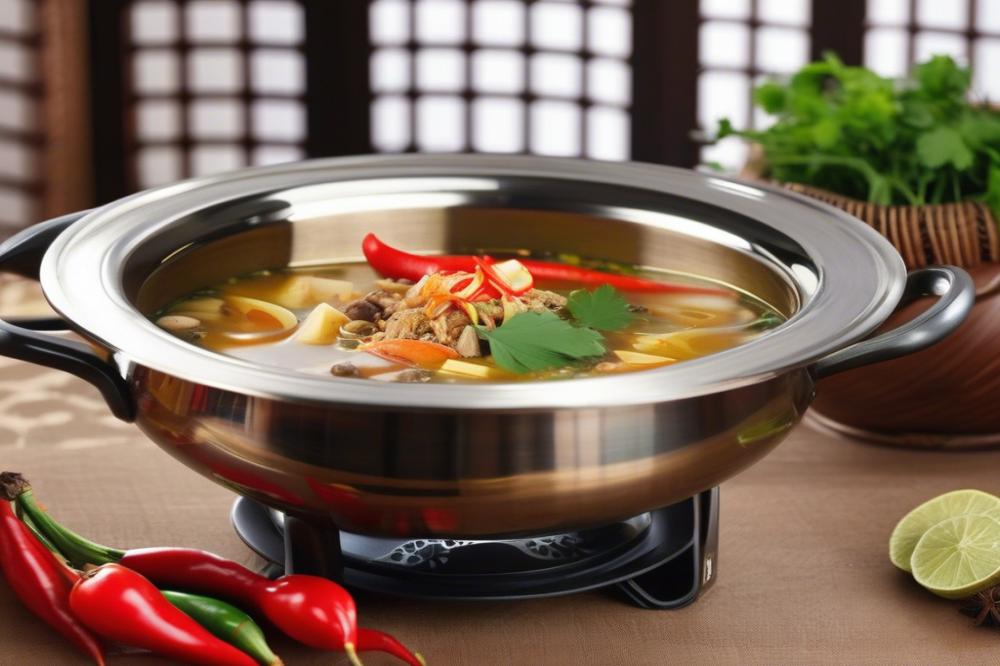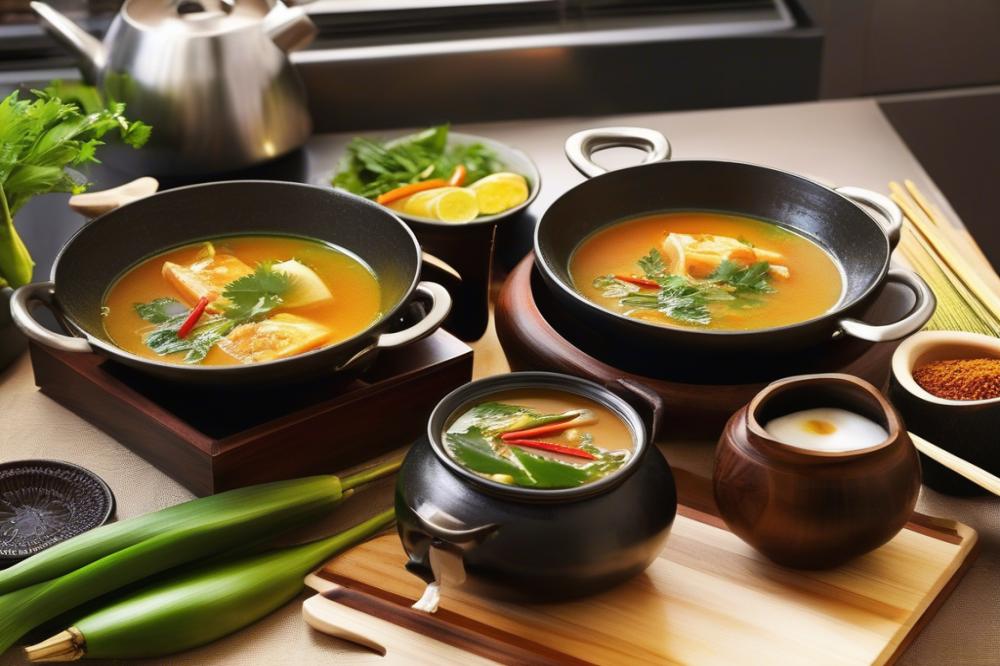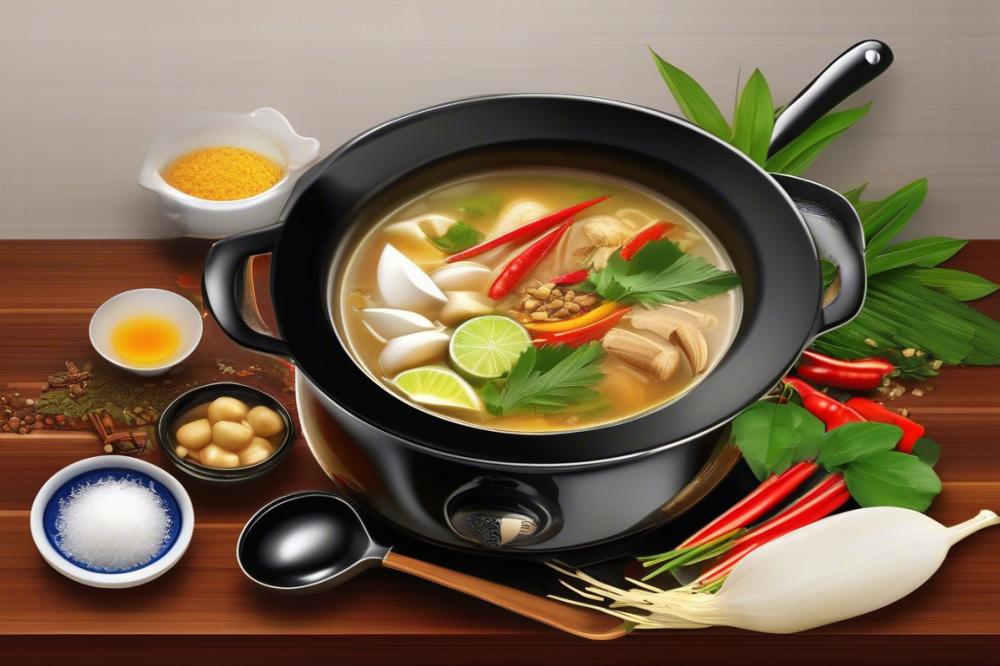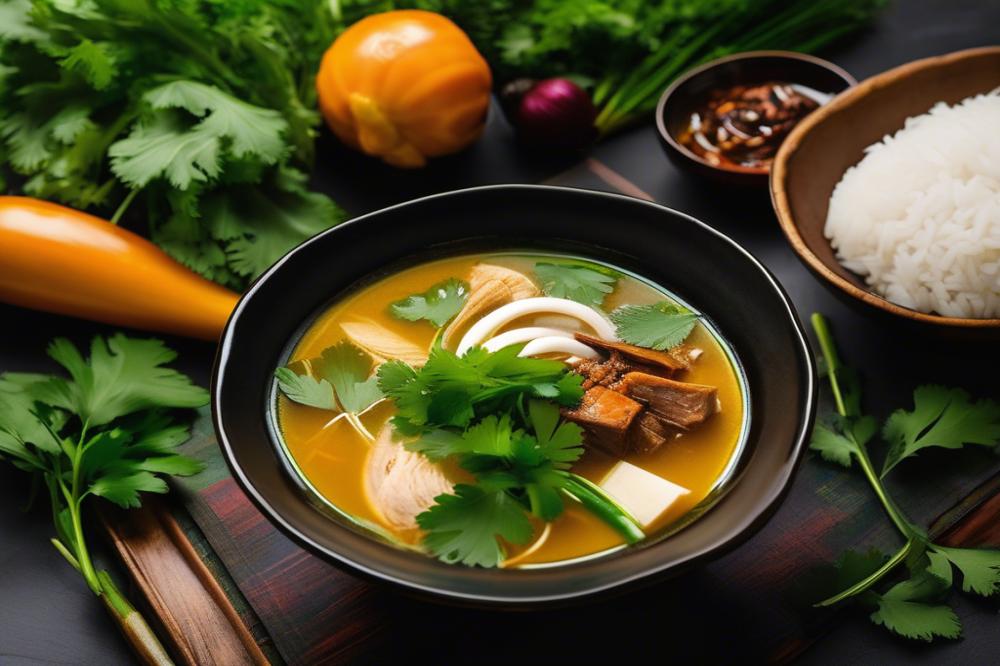Introduction to Sup Tulang
Sup Tulang is a quintessential dish that embodies the heart and soul of Malaysian cuisine. This beef soup, known for its rich flavors and hearty ingredients, serves as a staple in many households. As an example of comfort food, it warms both body and spirit. The warm, savory broth, loaded with nutritious elements, invites everyone to gather around the table.
In this delightful bone soup, slow-cooked bones release their goodness, creating a flavorful bone broth. The process allows time for the spices and herbs to meld together, resulting in a dish that’s not only delicious but also incredibly soothing. Many families have their own traditional recipe, carefully passed down through generations. Each bowl holds a story, linking the present with the cherished past.
Cooking methods play a crucial role in preparing Sup Tulang. A long simmer allows the ingredients to blend beautifully, filling the kitchen with enticing aromas. The patience required in this method is often rewarded with a meal that brings comfort after a long day. Sharing this delicious soup with loved ones enhances its cultural importance. It represents more than just nourishment; it evolves into a celebration of community and familial bonds.
Sup Tulang: The Heart of Malaysian cuisine

Gatherings in Malaysia often feature Sup Tulang, a beloved dish that warms the heart and soul. Family members come together to enjoy this savory bone broth, especially during significant celebrations. It serves as a central dish that encourages sharing and conversation among loved ones. Friends and family alike cherish this comforting beef soup because it evokes feelings of nostalgia and togetherness.
The roots of this dish lie in traditional recipes passed down through generations. Locals have shared their unique methods of preparation, with each family adding their personal touch. Commonly, the dish is slow-cooked to allow the flavors from the bones to infuse deeply into the broth. This method creates a rich and nutritious meal that highlights the essence of Malaysian cuisine.
Spices and herbs bring life to Sup Tulang. Ingredients like star anise, cinnamon, and ginger combine to create a complex flavor profile. People appreciate the balance of warmth from the spices and the earthiness from the herbs. The combination not only makes the dish delicious but also reflects the diverse influences within Malaysia’s culinary heritage.
Pleasing aromas waft through homes when Sup Tulang is simmering on the stove. The rich scent draws everyone into the kitchen, making it hard to resist a taste before the meal. Each bowl offers a plethora of flavors, showcasing the art of Malaysian cooking. As the broth is ladled into bowls, excitement fills the air, knowing that a comforting meal is about to be enjoyed by all.
Ingredients and Cooking Instructions

List of Ingredients
- Beef bones (2 kg)
- Water (3 liters)
- Ginger (2 inches, sliced)
- Garlic (10 cloves, crushed)
- Star anise (3)
- Cinnamon stick (1)
- Cloves (5)
- Lemongrass (2 stalks, bruised)
- Salt (to taste)
- Pepper (to taste)
- Chopped cilantro for garnish
Cooking Instructions
First, rinse the beef bones under running water to eliminate blood and impurities. Next, take a large pot and add the bones with water. Bring this mixture to a boil, skimming off any foam that appears. Once boiling, add ginger, garlic, star anise, a cinnamon stick, cloves, and bruised lemongrass.
Reduce the heat and let everything simmer slowly for 4 to 6 hours. This slow-cooked process allows the savory flavors to infuse into the broth. Afterward, strain the mixture to remove the solids, returning the rich liquid to the pot.
Now it’s time to season your bone broth. Add salt and pepper to taste, enhancing the overall flavor profile. Serve the beef soup hot, and don’t forget to garnish with chopped cilantro for a fresh touch.
Nutritional Information
Bone broth offers a multitude of health benefits. It is rich in collagen, which supports joint health and skin elasticity. The minerals found in bones add to its nutritional value. Furthermore, the herbs and spices used, like ginger and garlic, provide anti-inflammatory properties. This traditional recipe exemplifies comfort food in Malaysian cuisine, delivering both a warm meal and nourishment in every bowl.
Flavor Profile and Tips for Preparation

The flavor profile of Sup Tulang is rich and deeply savory. This Malaysian Bone Soup bursts with aromatic qualities that stem from slow-cooked beef bones. When preparing it, the essential spices and herbs play a crucial role. Fresh ginger, for instance, adds warmth, while onions contribute sweetness. Additionally, star anise imparts a hint of licorice, enhancing the overall fragrance.
To elevate the taste further, consider incorporating ingredients like lemongrass or coriander. A squeeze of lime juice offers a refreshing contrast to the rich broth. Pairing the soup with a side of crusty bread or a bed of fluffy rice can also elevate the meal. These sides soak up the delicious broth, making every bite satisfying and hearty.
Achieving the perfect consistency for the bone broth requires patience. Allow the soup to simmer for several hours. This slow-cooked approach helps extract collagen and nutrients from the bones, resulting in a nutritious and thick broth. Skim off any froth that forms on the surface. This will improve the final appearance and taste.
The best beef soup develops flavors over time. Make it a family event by preparing it together, sharing stories while the soup gently cooks. Serve it hot, garnished with fresh herbs like cilantro for an extra burst of flavor. Remember that comfort food should feel wholesome and inviting. Regularly tasting the broth during cooking will guide you in adjusting salt or spice levels to suit your preferences.
Cultural Variations and Serving Suggestions
Sup Tulang varies across different regions of Malaysia, showcasing the diversity of Malaysian cuisine. In Kuala Lumpur, you may find a richer, thicker bone broth infused with a blend of local spices. Meanwhile, in Penang, the recipe might lean towards a lighter, more herbal flavor profile. Some families in Sarawak even add a hint of coconut milk, giving their version a unique twist. Each area reflects the local preferences and the availability of ingredients.
Accompaniments play a crucial role in the experience of enjoying this beef soup. Common side dishes include fluffy white rice or crusty bread, perfect for soaking up the savory broth. Some might add a side of pickled vegetables, which provide a crisp contrast to the warm soup. Another popular option is sambal, a spicy condiment that enhances the overall flavor and adds heat.
The significance of sharing Sup Tulang in Malaysian culture cannot be overstated. Gatherings often feature this traditional recipe, symbolizing togetherness and hospitality. Families bond over slow-cooked bowls of deliciousness, enjoying the comforting warmth it brings. In many households, serving this nutritious dish is a way to honor guests and celebrate special occasions.
Embracing the Comfort of Sup Tulang
Nourishing and flavorful, the traditional bone soup holds a special place in Malaysian cuisine. This dish is more than just food; it represents a comforting experience that connects family and friends. With its rich broth and tender meat, every sip warms the heart and delights the taste buds.
Try making this classic recipe at home. Each step in the preparation offers a chance to enjoy the process of cooking. The aroma wafting through your kitchen will remind you of home-cooked meals shared with loved ones. Plus, you’ll gain confidence as you create your own version of this hearty dish. The simple ingredients come together to form a comforting bowl of bone broth that soothes both the body and soul.
Exploring other classic Malaysian dishes can further enhance your culinary journey. Each recipe tells a story and adds to the vibrant tapestry of flavors that mark this cuisine. From spicy rendang to sweet kuih, there’s always something new to discover. Embrace the journey of cooking and share it with your family. Enjoy the warmth of tradition and the joy that comes with every meal shared.



